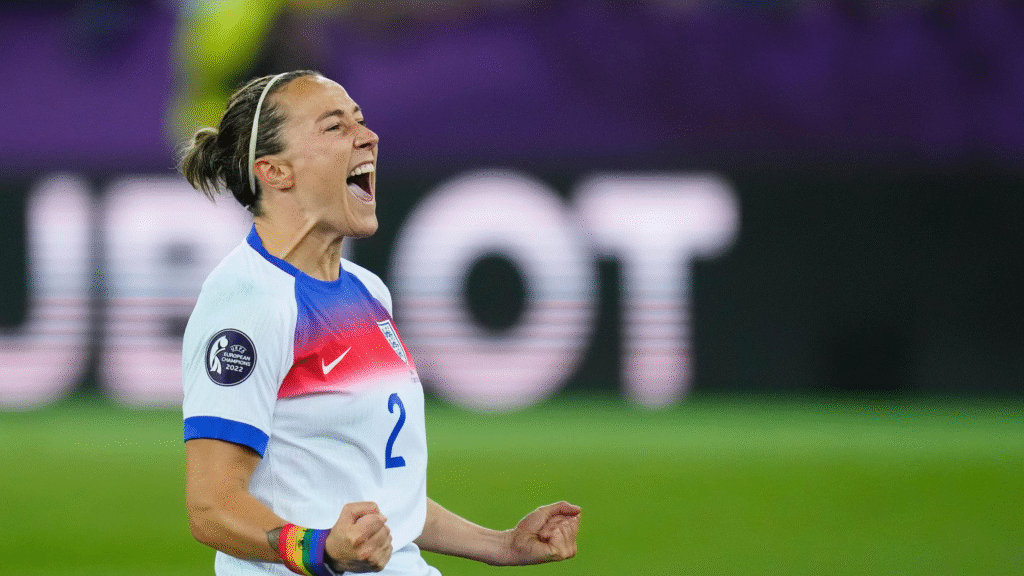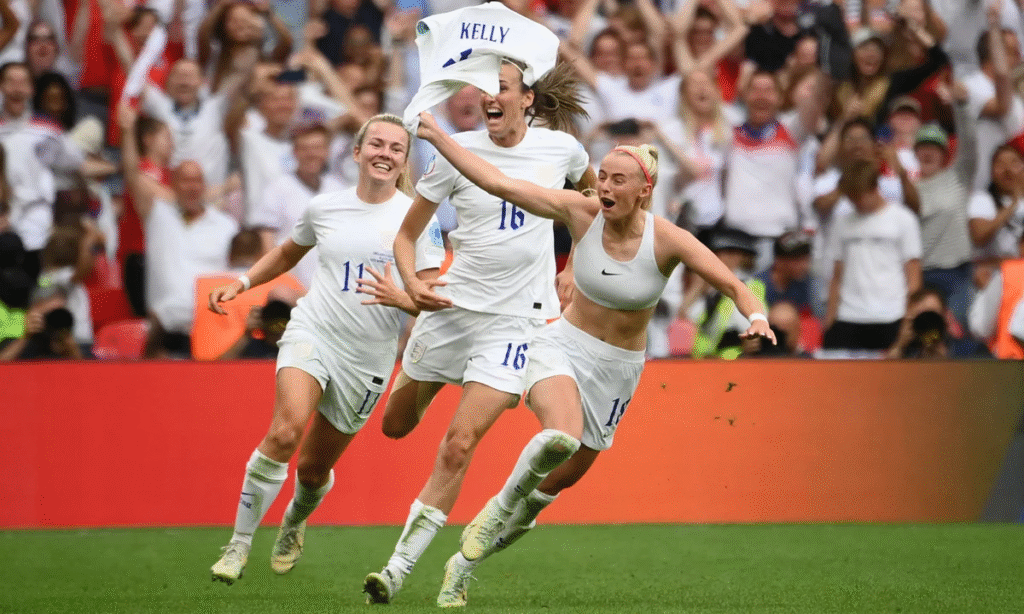Women’s football UK is no longer a side story. This is not a special corner of sports media. This is not some innovative project quietly waiting to attract attention. It has become a cultural force unto itself. It has become a mainstream sport. It has become appointment viewing. It has become a massive identity and representation. And it has become the most significant sporting change in Britain this decade.
Where It all Began: Women’s Football UK

Women played football in Britain more than a century ago. Thousands of people watched women’s matches after the First World War. Girls filled the stadium while the men were at war. It was accepted. It was natural. This was normal.
The FA banned women from playing on FA pitches in 1921.

Women’s football in Britain has been suppressed for generations. This ban lasted for 50 years. There was widespread damage to development, infrastructure, roads, and commercial infrastructure. But it’s the history that makes this era feel so powerful. Because this generation is not rising from nothing, it is rising from injustice. There is a feeling of cultural reform. The feeling of rebalancing a mistake. Success seems to be earned, not gifted.
How Modern Growth Began

The modern rise began slowly. The England women are continuously qualifying. Team GB at London 2012. Gradual commercialization. The media is starting to care. Clubs are investing again. Schools are slowly making space. The demand from broadcasters is beginning to be seen. Young girls only see role models in football kits rather than in pop culture.
It built year after year until a moment like 2022 made everything clear. The Lionesses winning the Euros changed national identity. It changed young girls’ beliefs that it was possible. This changed the country’s view of women in sports. This led to a change in how football executives perceived business value.
The Present Reality: Women’s Football UK

Women’s football UK is no longer a “good cause” conversation. This is a business conversation. This is a strategic rights conversation. This is a mainstream broadcast conversation. Its fan culture is real and deep. There is tribal energy in it. There is rivalry in this. There are narratives in it. There is an emotional investment in this. The audience is not passive. The audience is not watching politely. The audience is hungry. This information has been given. It is emotionally connected with the movement because it is history happening live.
Why This Era Feels Different Culturally
It’s not about copying men’s football. It is not about repeating the same structures. It’s not about matching aggression or replicating exactly the same tribalism. Women’s football UK is creating its own tone, its own relationship model with fans, its own visual identity, and its own cultural framework. The joy inside this game feels different. Inclusivity feels different. Access feels different. The player-to-supporter connection feels more authentic. There is less skepticism. Low toxicity. Less industrialized hatred. Less demonstrative rivalry. People choose this sport because it feels good to support it. Being supportive feels emotionally healthy.
The Identity Revolution
There is a generation of girls who will never grow up believing that football is not them. There is a generation of boys who have already grown up normalizing women as football heroes. There is a generation of adults who are finally realizing how much potential was blocked for decades. This is the reason why this is not an era of propaganda. This is structural. This is the identity level. This is cultural redefinition. This is long-term. Women’s football UK is not taking off because of a marketing wave. It is growing because it aligns with Britain’s new values: equality, representation, access, agency, visibility, and shared cultural ownership.
Why Gen Z is Driving Women’s Football UK Boom

Gen Z didn’t grow up with the old sports hierarchy. They do not believe that men’s football is the default and women’s football is secondary. They consume sports differently. They give more importance to representation. They don’t follow institutions but players. Their fan base is driven by identity. His loyalty towards the corporation is emotional. Women’s Football UK naturally resonates with their values as it reflects fairness, equality, community, and progress. They don’t need to be convinced. They came already united. They also consume football as a social culture. They watch players interact online. They follow from behind the scenes. They look for emotion and narrative. They engage with stories before statistics. This game gives them that naturally.
WSL Impact and The Shift in Domestic Power
The Women’s Super League changed everything structurally. This gave women’s football a league product that could scale commercially. Clubs invested. Broadcasters invested. Sponsors invested. Attendance data climbed. Broadcast figures surged. The level increased rapidly. Talent development improved. The roads were cleared. Women’s football in the UK suddenly had a league that could stand up not as a charity project but as a real product. And when a league becomes a real product, the culture changes permanently. There is no temporary hype about it now.
TikTok and New Football Culture
TikTok football culture has changed the way fans engage with the game. The new match day highlight reel is a concise form of emotional storytelling. Clips of locker room cheers, tunnel walkouts, moments of player personality – these spread faster than sophisticated broadcast packages. Gen Z and younger millennials connect with football through emotional pieces, not through a structured 90-minute narrative. Women’s football UK thrives within this new media language because players are relatable, accessible, human, and visible online. They are not protected behind corporate performance masks like many male football celebrities. This human closeness is a superpower.
The Future Trajectory
This is not the ultimate moment. It’s a start. Revenue will increase. Pay scale will increase. Youth paths will be bigger. Broadcasting rights will increase. The identity of the stadium will increase. Sports tourism will increase. Legacy clubs will begin to view women’s teams not as side projects but as global anchor brands. The next five years will define the UK women’s football’s global position. Britain could become the global capital of women’s sport. The pipeline is strong. The growth of the fanbase is sustainable. Cultural alignment is modern. This generation will not let the game shrink again.
Final Thoughts
This movement is not just about sports. It’s about identity and agency. It is about the right to dream without any restrictions. Women’s football UK is rewriting who belongs on the pitch, who owns the narrative, and who shapes the national sporting memory. It is not just growth that is being seen in Britain. Britain is witnessing a sporting rebirth that will transform the next half-century of football culture. This is a new sporting era.
FAQs
Question: Is women’s football in the UK profitable?
Answer: Yes, and as the rights and sponsorship scale continues to grow exponentially year by year.
Question: Why is attendance increasing so rapidly?
Answer: Because the demand was always there. Reach and coverage eventually caught up.
Question: Does grassroots participation influence future development?
Answer: On a large scale. Pathway volume equates to long-term competitive quality and commercial value.
Question: Will salaries eventually equal men’s football?
Answer: Not in the near term, but they will increase rapidly as the league’s valuations are rising rapidly.
Question: Is this growth sustainable?
Answer: Yes. Cultural change is structural, generational, and value-based, not a temporary fad.
